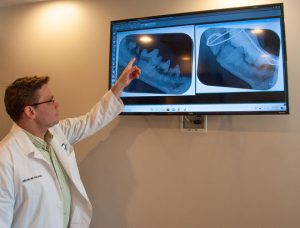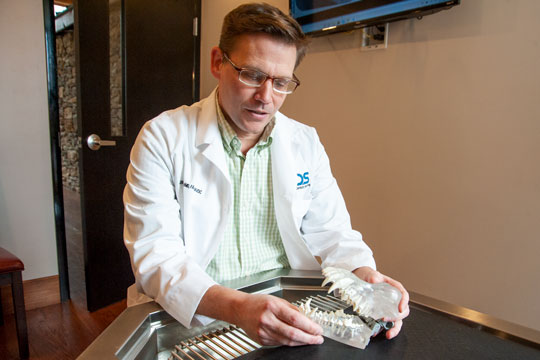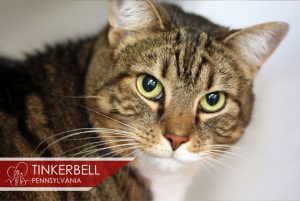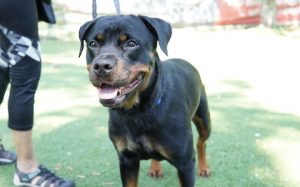Not everyone gets to do dental work on a 300-pound jaguar, but Dr. John Lewis has. Lewis is a veterinary dentist, one of fewer than 200 in the country. He’s also done dentistry on kangaroos, tigers and coatimundis, a South American raccoon. But he focuses primarily on dogs and cats “and an occasional farm animal” in his Pennsbury Township practice.
And it’s the health and well-being of those household pets that Lewis and his team – which includes a board-certified anesthesiologist and a certified specialty technician — want to keep healthy.
“Maintaining a healthy mouth will help maintain a healthy body with animals as with people,” he said.
Lewis, who gets his patients through referrals from general practitioners, said that it can be tough for vets because their patients can’t talk, and they tend to hide signs of discomfort. Sometimes you don’t know they were in pain until after they’re treated.
“There’s not a lot of outward signs that dogs or cats will show that they’re having effects from their dental disease. But when they come back for the recheck, a lot of owners will say their pet acts like a puppy or a kitten again”

The number one dental issue he sees is periodontal disease.
“A vast majority of dogs and cats will have some degree of periodontal disease,” he said. “It starts out as gingivitis and then progresses to attachment loss…which can affect the teeth functionally.”
Cats can also have tooth resorption, which he said is like a cavity, but it starts at the root and works its way to the crown.
“We don’t know what causes the resorption but it’s something we see in both dogs and cats but more commonly in cats.”
One way to keep animals healthy is to brush their teeth. Lewis said it’s the most effective and least expensive way to prevent that plaque buildup. He admits it’s not the easiest thing to do but said his office has a training video that shows people how to brush their pets’ teeth.
Short of watching the video, Lewis said to go slow. Just start by touching the animal’s mouth and teeth and introduce the brush over time. Use a brush with very soft bristles.
“Make it a positive experience. It would be counterintuitive for us to have a treat right after brushing but in this case, it’s probably a good thing. If they’re not looking forward to the brushing,” he said, “at least they’ll look forward to the treat.”
He likened the process to the case of Inca, the jaguar.
Inca had a broken and infected canine tooth that needed work. Lewis said she was trained well by the zoo staff. She would come up to the bars of the cage and accept a treat. She would then allow them to give her an injection in a hind leg that would make her sleepy enough to work on. If a jaguar can be taught to walk up to the bars of a cage and accept an injection, he said, a dog can learn to have its teeth brushed.
And brush their teeth daily. It only takes 48 hours for the plaque to mineralize and turn into tartar, Lewis said.
As far as those treats are concerned, some of the commercial products are good but he stressed looking for a product with the VOHC Seal of Acceptance. The acronym stands for Veterinary Oral Health Council.
Another dental problem, especially for dogs, is broken teeth.
“When a tooth is fractured to the degree where the nerves in the center of the tooth are exposed, then our options are to either extract that tooth or do a root canal, depending on how functionally important that tooth is,” he said.
A way to minimize the chances of a broken tooth is to not give dogs bones, antlers or even nylon bones or ice cubes. He said to give them something that yields to thumb pressure, such as a rubber Kong toy.
Lewis graduated from the University of Pennsylvania School of Veterinary Medicine in 1997 but began specializing in veterinary dentistry in 2002. Partnering with a veterinary dentist in New Jersey, he opened the VDS — Veterinary Dentistry Specialists — Pennsbury branch in February of 2019.
He was in general practice with several other veterinarians in North Carolina and one of them had some training in dentistry.
“It was just in the early stages of becoming a specialty at that point, so there wasn’t a lot of education in veterinary school about dentistry and oral surgery,” he said. “But I got into it out of necessity.”
His own dental needs came into play in those days. “It seemed like every day I wasn’t at the veterinary clinic I was in the dentist’s office, so I got interested in it that way, as well.”
He was doing so much animal dentistry that he decided to get some more formal training and got a residency back at Penn. He enjoyed teaching, he said, and stayed at Penn for another 11 years, becoming an associate professor, before working with another dentist in New Jersey and eventually made his way into the Chadds Ford area.
About Rich Schwartzman
Rich Schwartzman has been reporting on events in the greater Chadds Ford area since September 2001 when he became the founding editor of The Chadds Ford Post. In April 2009 he became managing editor of ChaddsFordLive. He is also an award-winning photographer.


 (4 votes, average: 4.25 out of 5)
(4 votes, average: 4.25 out of 5)

Comments